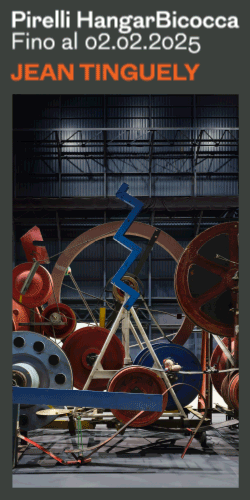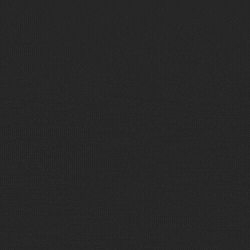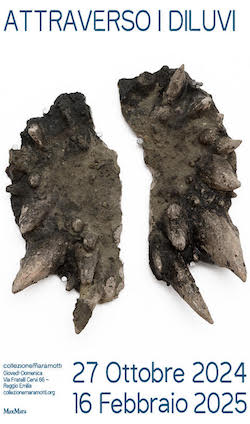The artist will develop a specific project for the places and architectures that will be hosting her, starting with considerations of research on materials and everyday objects and their capacity to change over time, in order to attract the viewers’ attention concerning their consistency, history, and relationship with the surrounding environment.
Matteo Mottin asked Jaimini Patel to create – exclusively for the readers of ATPdiary – a commented photographic diary to tell about the genesis of the site specific projects she developed in the first part of her residency.
L’inglese Jaimini Patel è la vincitrice dell’ottava edizione del programma di residenza semestrale Diogene Bivaccourbano_R 2014, bando di concorso internazionale indetto da Progetto Diogene a sostegno della ricerca artistica da svolgersi nel territorio torinese. Jaimini Patel elaborerà un progetto specifico per i luoghi e le architetture che la ospiteranno, partendo da considerazioni di ricerca su materiali e oggetti del quotidiano e la loro capacità di trasformazione nel tempo, al fine di attirare l’attenzione dello spettatore sulla loro consistenza, sulla storia e sulle relazioni con l’ambiente circostante.
Matteo Mottin ha chiesto all’artista di creare – in esclusiva per i lettori di ATPdiary – un diario fotografico commentato per raccontare la genesi dei progetti site specific che ha sviluppato nella prima parte della sua residenza.

The tram & the studio
The Diogene tramcar sits in the middle of a busy roundabout on Regio Parco. Inside the tram experiences are intensified. The heat, the noise, seeing and the feeling of being seen become acute. The option for panoramic viewing is overwhelming. It is difficult to focus my attention or fix my gaze. While I don’t enjoy being seen, I enjoy watching others. With the blinds down I watch people furtively through the gaps. My reluctance to be seen increases the feeling of invading their privacy and I am forced to look away. The balance of power is in flux. When I fill up the tanks of water on the tram roof, anyone on the street or the flat dwellers towering above can watch. Once I return inside, I can continue to observe the happenings of the street, but those in the flats above can keep an eye on everything, unobserved if they choose.
Il tram e lo studio
Il vagone del tram di Diogene si trova nel bel mezzo di una rotonda rotonda trafficata su Corso Regio Parco. All’interno del tram le esperienze si intensificano. Il calore, il rumore, il vedere e la sensazione di essere visti si acuiscono. L’opzione della vista panoramica è schiacciante. E’ difficile mettere a fuoco l’attenzione o fissare lo sguardo. Anche se non mi piace essere vista, mi piace guardare gli altri. Con le persiane abbassate, guardo di nascosto la gente attraverso le feritoie. La mia riluttanza ad essere vista aumenta la sensazione di invadere la loro privacy e sono costretta a distogliere lo sguardo. L’equilibrio per il potere è in costante mutamento. Dalla strada o dagli appartamenti che svettano sulla rotonda, quando riempio i serbatoi d’acqua sul tetto del tram tutti possono vedermi. Una volta dentro, posso continuare ad osservare gli avvenimenti in strada, ma quelli negli appartamenti di sopra riescono a tenere un occhio su tutto, inosservati se lo desiderano.

In the studio I can close the blinds completely and then the shutters so that I have privacy even from the gaze of insects. The shutter blinds allow me to see without being seen. I thought I had adjusted them correctly, but then a passer-by turns and catches my eye. When I use the camera to capture my view, I notice that it selects whether to capture the blinds, what lies beyond or both. I watch and photograph the woman who watches the street from her balcony opposite. She comes out often like the people that watch the tram.
Nello studio possono chiudere completamente le tapparelle e le saracinesche, così da proteggermi anche dallo sguardo degli insetti. Le tapparelle mi permettono di guardare senza essere vista. Penso di averle regolate in maniera corretta, ma poi un passante all’improvviso si volta e incrocia il mio sguardo. Quando uso la macchina fotografica per catturare ciò che vedo, noto che può scegliere se catturare le tapparelle, quello che si trova oltre o entrambe le cose. Guardo e fotografo la donna che guarda la strada dal balcone di fronte. Esce spesso, come la gente che guarda il tram.

With the blinds down in the tram you can see vertical segments between them that offer different views from which you can choose. In the studio there is one view with horizontal slices that the eye can fill in.
I now understand the phrase: mod cons or modern conveniences a little better. Filling the water tank in the morning before I can do anything is not convenient. Nor is heating water to bathe with on the gas stove lit with matches. However, as I wait for the sign that the tank is full, I notice the mountains, the morning light and the people starting their day. Washing and wringing my clothes or shopping each day because there is no fridge invites me to adjust to a new rhythm. These activities enable me to punctuate my day, to be more present and to create pockets of time. The more convenient things are the more time we expect to have, which we attempt to cram with more things. Camping in a forest you expect to escape from this thirst, yet here in the middle of Turin it is at first strange and then a welcome device to change my pace. In the studio the doorways on the mezzanine level are too low even for me. If I let my thoughts run away and go too fast I bump my head.
Con le tapparelle del tram abbassate si possono vedere segmenti verticali, da cui si possono scegliere vedute da diverse angolazioni. Nello studio invece c’è una vista unica divisa in molte sezioni verticali.
Ora capisco cosa si intende quando si dice che le comodità della casa ti migliorano la vita. Riempire i serbatoi dell’acqua ogni mattina prima di fare qualunque altra cosa non è molto comodo. Non lo è nemmeno il dover riscaldare l’acqua per lavarsi su una stufa a gas accesa con i fiammiferi. In ogni caso, mentre aspetto di raggiungere il segno che indica che il serbatoio è pieno, noto le montagne, la luce del mattino e la gente che inizia la sua giornata. Lavare e asciugare i vestiti o fare la spesa ogni giorno perchè non c’è il frigorifero mi porta ad adattarmi a nuovi ritmi. Queste attività mi permettono di scandire la giornata, di essere più presente e di crearmi delle tasche di tempo. Le cose più convenienti ti danno la sensazione di avere più tempo a disposizione, che poi cerchiamo in ogni modo di stipare con altre cose da fare. Accampandoti in una foresta hai l’impressione di fuggire da questa sete, anche se qui siamo nel mezzo di Torino, e dapprima fa strano, poi diventa un meccanismo benvenuto per cambiare i miei ritmi.
Nello studio le porte del piano ammezzato sono troppo basse, persino per me. Se lascio correre i miei pensieri e vado di fretta, picchio la testa.

Screen
I had been thinking about how to intensify the act of seeing and of being seen. In response to the horizontal lines of viewing in the studio, I decided to create vertical ones. I had in mind a material that would play with light. The colour and sheen of the semi-translucent bin bags in the Chinese supermarket seemed to be just what I was looking for. In a certain light the surface can appear iridescent. I unrolled the bags and used them in their folded state hanging them from the mezzanine rail in 3m lengths, elevated from the floor by 10cm. A further 2m lies rolled on the mezzanine level, holding the bags in place. The lengths are placed next to each other on the rail so that they touch. I adjust their position painstakingly over many days, a fraction down, to the side and then back again until they line up exactly vertically and horizontally. The bags respond to each other (drawn together by static) or to the viewer. Gaps form and disappear.
Schermo
Ho pensato parecchio a come intensificare l’atto di guardare ed essere guardati. In risposta alle linee orizzontali da cui guardo fuori dallo studio ho deciso di crearne di verticali. Avevo in mente un materiale che potesse giocare con la luce. Il colore e la lucentezza dei sacchetti della spazzatura semitrasparenti che si trovano nel supermarket dei cinesi sembrano essere quello che stavo cercando. Sotto una certa luce la loro superficie sembra iridescente. Ho srotolato i sacchetti e li ho appesi alla ringhiera del piano ammezzato in strisce lunghe tre metri ciascuna, distanti dieci centimetri dal pavimento. Altri due metri di queste strisce rimangono arrotolati sul piano ammezzato, per tenere in posizione i sacchetti. Le strisce sono piazzate una vicina all’altra sulla ringhiera in modo che si tocchino. Nell’arco di vari giorni, modifico scrupolosamente il modo in cui sono disposti, un po’ più in basso, un po’ di lato, poi di nuovo com’erano prima, finchè sono tutti esattamente allineati sia in verticale che in orizzontale. I sacchetti reagiscono l’uno con l’altro (attirati da forze elettrostatiche), e anche nei confronti dello spettatore. Le aperture di formano e scompaiono.

The strip of plastic running through each bag is an unexpected gift. The bright pink line of colour comes in and out of focus behind the layers of yellow. Occasionally a portion pokes through sharp and clean. The line wavers this way and that adding to the vertical lines of the bags and the horizontal serrated ones where they join. In the middle of each serrated line is a small opening that puckers out like a pair of lips.
Le strisce di plastica in mezzo ai sacchetti sono un regalo inaspettato. La linea rosa è a tratti opaca e brillante sotto gli strati di giallo. A volte una porzione spunta fuori, dritta e pulita. La linea serpeggia, aggiungendosi alle linee verticali dei sacchetti e a quelle orizzontali seghettate. In mezzo ad ogni linea seghettata c’è una piccola apertura, che si increspa all’infuori come una paio di labbra.

Natural light enters from two large windows on one wall and thus the experience of the work depends on the position of the viewer. With the windows behind, the light hits the surface making it glisten and cast a subtle yellow haze onto the white walls. Behind the shimmering yellow the space appears dark. Facing the windows the light permeates the bags creating an intense glow that fills the space. The more translucent edges of the bags are illuminated. The gaps between the bags and in particular, the fine serrated lines reveal glimpses of a brilliant light beyond.
Throughout the day the piece responds to the changing light. I had imaged how people might view each other within the installation, but having spent time in it, I envisage a more solitary experience. One concerned with observing the material, the light and movement and return to stillness. Walking through the expanse of yellow, disturbance in one area reverberates throughout. The ethereal partition is acutely sensitive and it is this and its painterly qualities that invite me back to watch.
La luce naturale entra da due grandi vetrate, e in questo modo l’esperienza del lavoro dipende dalla posizione dello spettatore. Con le finestre alle spalle, la luce colpisce la superficie facendola luccicare e gettando una leggera nebbiolina gialla sui muri bianchi. Dietro al giallo scintillante, lo spazio è buio. Dalla parte opposta della finestra la luce permea i sacchetti creando un bagliore intenso che riempie lo spazio. I bordi più trasparenti dei saccehtti sono illuminati. Le fessure tra i sacchetti e, in particolare, le sottili righe seghettate fanno intravedere la luce brillante che sta oltre.
Durante la giornata il lavoro risponde al mutare della luce. Mi sono immaginata come gli spettatori possano guardarsi l’un l’altro all’interno dell’installazione, ma avendoci passato del tempo all’interno, mi figuro un’esperienza più solitaria. Un’esperienza che ha a che fare con l’osservazione del materiale, la luce e il movimento, fino ad un ritorno all’immobilità. Camminando attraverso la distesa gialla, i piccoli movimenti che avvengono in una parte riverberano su tutto il lavoro. La partizione evanescente è molto sensibile, ed è questa caratteristica, unita alle sue qualità pittoriche, che ogni volta mi invita a ritornare a guardarla.

Sightline
The next piece is in the tram. Working in the tram is very different to living in it. Entirely focused on what I am doing I do not notice anything of the world outside. Despite the fact that I have removed the blinds and am working directly on the windows, my attention is reduced to minute details and does not extend beyond the surface of the glass.
Linea visuale
Il lavoro successivo è nel tram. Lavorare nel tram è molto diverso rispetto al doverci vivere. Interamente concentrata su quello che sto facendo, non noto nulla del mondo esterno. Nonostante abbia rimosso le imposte e abbia lavorato direttamente sui finestrini, la mia attenzione si concentra sui minimi dettagli della superficie del vetro e non va oltre.

I cover the windows in semi-opaque egg tempera. An off-white colour is built up in layers until it obtains the quality of linen. I try different methods of application, as the paint does not adhere to glass easily. Eventually I use a large brush and then repeatedly drag the paint with a paper towel in an alternate vertical and horizontal direction. Each time the paint is dragged across the surface it becomes finer. An extremely light touch is required and the ability to decipher the point just before the paint dries, after which dragging will not add opacity, but remove it. The tempera is mixed to the same ratio of pigment, egg yoke, water and washing up liquid, but the colour, texture and opacity are unpredictable and elude control.
Copro i finestrini con tempera all’uovo semi-opaca. Deposito a strati un colore biancastro finchè ottiene le stesse caratteristiche cromatiche del lino. Provo diversi metodi di applicazione, dato che la tempera non aderisce facilmente al vetro. Alla fine uso un pennello molto largo, poi trascino il colore con un tovagliolo di carta, alternando una direzione orizzontale ad una verticale. Ogni volta che trascino il colore sulla superficie, questo diventa più sottile. E’ necessario un contatto molto leggero, unitamente all’abilità di decifrare il momento appena prima che il colore si secchi, oltre il quale il trascinamento non aggiunge opacità, ma la rimuove. La tempera è mescolata alla stessa quantità di pigmenti, bianco d’uovo, acqua e detersivo per piatti, ma il colore, la consistenza e l’opacità sono imprevedibili e molto difficili da controllare.

To give an un-obscured view beyond the glass I create a thin horizontal line on each window. This is achieved with masking tape, which I cut freehand along a ruled line. Sometimes there is a slight curve to the masking tape as it goes onto the glass, which I try to accommodate. The line is at my eye-level. Upon closer inspection it is apparent that the edges are not clean, a crust has formed where the tempera has accumulated along the masking tape. In order to see clearly through this line, one eye is sufficient. The fragmented attention created by panoramic viewing is replaced by a focused and deliberate viewing. One must choose where to place ones attention.
Per poter avere una visione chiara oltre al vetro, su ogni finestrino ho creato una sottile linea orizzontale. L’ho ottenuta usando del nastro di carta, che taglio a mano libera lungo una linea che ho disegnato in precedenza. A volte compare una leggera curvatura nel nastro, che cerco di accomodare. La linea si trova all’altezza del mio sguardo. Ad un’ispezione più accurata risulta evidente che i bordi della linea non sono puliti, si è formata una specie di crosta nei punti dove si è accumulata la tempera sul nastro adesivo. Per guardare attraverso questa linea, un occhio è sufficiente. L’attenzione frammentata creata dalla vista panoramica viene rimpiazzata da un modo di guardare focalizzato e deliberato. Uno deve scegliere dove dirigere la sua attenzione.









